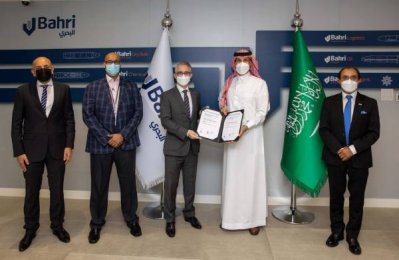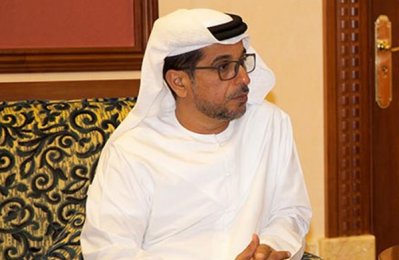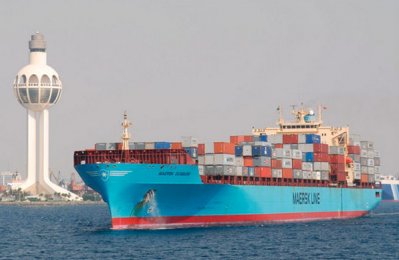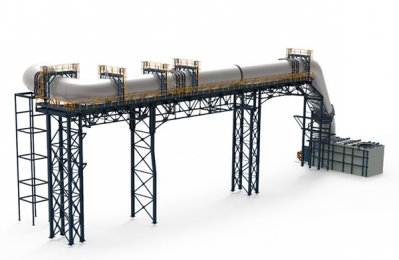CallisonRTKL unveils key trends that will shape future workplaces
Global architecture, planning and design firm, CallisonRTKL has revealed six key trends on how technology can support and transform the Middle East’s workplace of the future evolviing around three key components - people, place and purpose.
More Stories
Global architecture, planning and design firm, CallisonRTKL has revealed six key trends on how technology can support and transform the Middle East’s workplace of the future.
With the nature of work and the workplace changing, following the outbreak of Covid-19, new technology, practices, and processes will come to change offices in the Mena region.
With both employers and employees in the region having faced radically different circumstances over the past nine months, the opportunity to leverage digital solutions in the workplace has never been more abundant,, said the statement from CallisonRTKL.
The Middle East is at the forefront of global technology adoption, and nations across the GCC have emphasised the importance of digital development within national economic strategies, it stated.
With so many employers having to suddenly create flexible working solutions due to the pandemic, workplaces have significant opportunity to see the integration of technology into their day to day operations, it added.
CallisonRTKL pointed out that the workplace of the future will continue to be centred around people despite new technologies. Accordingly, workplaces need to be designed to be user-centric for employees.
The top architecture firm have identified three key components for enabling the workplace of the future: people, place, and purpose. In doing so, employers ensure their people continue to perform well in their workspace, while still building a strong community.
"As companies deal with the widespread effects of the pandemic, Middle East employers have a transformative opportunity to change the status-quo of how staff engage with their office space," stated Matthew Tribe, Executive Director at CallisonRTKL.
"In doing so, they not only help work towards national innovation strategies, but they help further emphasise the Middle East as a region at the forefront of digital transformation," he noted.
"Engaged employees can lead to stronger corporate revenue growth, yet implementing that transformation can be difficult for a company’s leadership to fully understand, particularly with so many working from home," added Tribe.
According to him, the six workplace trends from a technology perspective are:
*Leveraging Data
Utilising technology to collect and manage data from a work environment can be highly informative and useful for the future of workplaces. Being able to gather and evaluate the data not only informs companies of their current status but it can also highlight a variety of opportunities to help improve awareness and operational inefficiencies. This can be achieved by using sensors to determine occupancy levels in the workplace which can control the amount and types of space needed, when and where a space needs to be cleaned or to adjust the HVAC levels if necessary based on occupancy and zones.
*Bring Your Own Device (BYOD)
Personal mobile devices will become a more robust method that individual users can use to not only communicate with others, but also connect with smart systems built within a workplace environment. This will create a safe and frictionless journey to and from the office for individual users by using the functions on their device. This can be seen by scanning a QR code on the device to gain security access, to remotely call a building elevator, access real-time parking space availability, make real-time office announcements or to schedule and reserve conference rooms or desks. This can save individuals up to 58 minutes per day with a 34% increase in productivity.
*Seamless Conferencing
Most companies have become “power users” for video collaboration technologies such as Microsoft Teams, Zoom, and Cisco Web Ex. The need for collaboration technologies that foster highly effective and modernised experiences seamlessly in spaces on-site and virtually from home will become more prevalent in the future. This could be achieved through an identical virtual conferencing experience without the need to always bring your laptop or tablet into the office or by implementing systems within conference rooms that accommodate ‘one touch’ or touchless functionality for easy activation.
*Digital Creation Lab
The need to build immersive experience centres and innovation labs at the workplace is vital when building the workplace of the future. These spaces can be used for multiple functions from digitally showcasing the office’s sustainable and wellness data on a dashboard, to providing multi-dimensional spaces for various purposes or to display a company’s latest portfolio or products. Although this promotes a company’s culture and brand its main purpose is to spark innovation and collaboration.
*Sustainability
Sustainability will continuously be a key influencer in the future workplaces. It has grown to become a large factor in designing today’s work environments and can immensely impact the physical nature and comfort of a space for employees through technology advances. This can be achieved through smart system integration to help manage and collect data related to the office’s sustainable performance through air flow, energy usage, and water consumption and more which will in turn improve comfort and operational efficiency leading to an increase in cost savings of up to 15%.
*Wellness through Technology
As employees are the heart of companies, wellness is vital. Technological enhancements in a work environment can ensure that the health and wellbeing of employees are continuously supported on a daily basis.
This can be supported through automated systems that; adjust HVAC filtration and air flow levels based on occupancy; sensors that measure temperature, humidity, CO2, VOC, and sound levels; indoor lighting systems that mimic natural light to regulate circadian rhythms; regular notifications to remind employees to stand up and stretch; dashboard notifications to notify when spaces or desks have been cleaned and a change mode on occupancy sensors/wall switches in enclosed spaces to avoid frequency of touch.
According to him, implementation of programmes through digital transformation ensure that employees who are working remotely remain engaged and connected at all times.
"In doing so, business leaders in the Middle East will be forging the future of the region’s workplaces," he added.-TradeArabia News Service
Projects
















